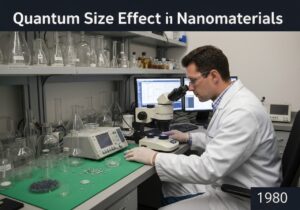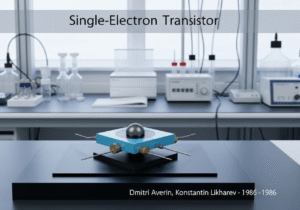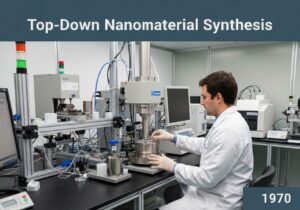这是我们最新精选的量子点方面的全球出版物和专利,涉及许多科学在线期刊,分类并侧重于量子点、激子、量子产率、双激子、佛斯特耦合、多重激子产生、隧道耦合、自旋量子比特、无镉量子点、非均相展宽、多重激子产生 (MEG)、奥奇重组和 CFQD。
The Dose-Dependent Effect of Carbon Quantum Dots as a Photosynthesis Enhancer on Soybean Plant Growth
Published on 2025-10-21 by Qianyuyue Wang, Kun Lv, Jian Song, Moyan Li, Xingnan Ouyang, Chengcheng Liu, Shuang Gong, Jinxing Wang, Jianming Li, Zhe Zhang @MDPI
Abstract: When carbon quantum dots (CDs) are used to enhance photosynthesis, they inevitably enter the plant. However, the dose-dependent effects of CDs on plant growth are poorly understood. In this study, we investigated the dose-dependent effects of CDs on soybean growth. CDs were synthesized from citric acid and urea via a hydrothermal procedure. The analysis of the structure, chemical composition, and optical properties revealed that synthetic CDs have a sphere-like shape with rich hydrophilic groups[...]
Our summary: This study investigates the dose-dependent effects of carbon quantum dots (CDs) on soybean plant growth. Low concentrations of CDs enhance photosynthesis and promote growth, while higher concentrations exhibit toxicity. The findings provide insights into the use of CDs in sustainable agriculture.
Carbon Quantum Dots, Photosynthesis Enhancement, Soybean Growth, Dose-Dependent Effects
Publication
Ultrasensitive and Selective Fluorescent Sensor for 5-Hydroxymethylfurfural Based on a Molecularly Imprinted Polymeric Nanocomposite
Published on 2025-10-20 by Fatih Pekdemir, İzzet Koçak @MDPI
Abstract: A fluorescence sensor was designed based on nitrogen-doped graphene quantum dots confined in a metal–organic framework and molecularly imprinted polymer for the selective determination of 5-hydroxymethylfurfural (HMF). Morphological, structural, and spectroscopic characterizations, such as SEM, STEM, BET, FT-IR, and XRD, verified successful synthesis and imprinting with enhanced surface area and structural durability. The sensor demonstrated intense fluorescence at around 420 nm, w[...]
Our summary: A novel fluorescent sensor was developed using nitrogen-doped graphene quantum dots and a molecularly imprinted polymer for detecting 5-hydroxymethylfurfural (HMF). Characterization techniques confirmed successful synthesis and enhanced properties of the sensor. The sensor showed high selectivity and stability, with effective performance in real food samples.
Fluorescent sensor, Molecularly imprinted polymer, Nitrogen-doped graphene, 5-Hydroxymethylfurfural
Publication
Room Temperature Fabry–Pérot Modes Microcavity Exciton–Polariton in CdS/CdS:SnS2 Superlattice Microwires
Published on 2025-10-20 by Jia Wang, Caiqin Jia, Heming Sun, Ye Tian @MDPI
Abstract: Achieving room-temperature exciton–polariton condensation represents a frontier challenge in condensed matter physics and optoelectronics. However, its mainstream approach—distributed Bragg reflector (DBR) microcavities—faces widespread application challenges due to complex fabrication and high costs. Here, we report direct observation of the interaction between exciton and microcavity photons in Sn-doped CdS microsheet without extreme fabrication condit[...]
Our summary: This study reports the observation of exciton-polariton interactions in Sn-doped CdS microsheets at room temperature. It highlights the formation of a superlattice structure and demonstrates Rabi splitting of polaritons up to 140 meV. The findings contribute to understanding light-matter coupling in CdS/CdS:SnS2 superlattice microwires.
Exciton-Polariton, Microcavity, Room Temperature, Rabi Splitting
Publication
Functional Perspectives of Co-Doped Zno Thin Films
Published on 2025-10-18 by Mariuca Gartner, Mariana Chelu, Anna Szekeres, Peter Petrik @MDPI
Abstract: Zinc oxide (ZnO) thin films have attracted increasing attention as promising materials for sensing applications due to their wide band gap, high exciton binding energy, and remarkable chemical stability. However, the inherent limitations of pure ZnO, such as moderate sensitivity, selectivity, and relatively high operating temperatures, limit its widespread use in advanced sensing technologies. Co-doping, or dual doping with two distinct elements, has emerged as an effective strategy to overcome [...]
Our summary: Co-doped ZnO thin films enhance sensing capabilities by improving structural and electronic properties. The review discusses various dopant combinations and their effects on sensor performance. Key challenges and opportunities in the development of these materials for advanced applications are also addressed.
Co-doping, ZnO thin films, sensing applications, material properties
Publication
Nanoarchitected Pt3Pd1 on Nettle-Derived N,Si-CQDs for High-Performance Methanol Electrooxidation
Published on 2025-10-14 by Seden Beyhan @MDPI
Abstract: This study introduces nitrogen- and silicon-containing carbon quantum dots (N,Si-CQDs), synthesized hydrothermally from the sustainable bioresource stinging nettle (Urtica dioica L.), as chemically active supports for Pt, Pd, and Pt3Pd1 electrocatalysts. The N,Si-CQDs were characterized by a high concentration of N/O surface functionalities and the presence of biogenic Si. A significant finding is that, with this support, biogenic Si acts as a nucleation template: Pd forms in situ as orthorhombi[...]
Our summary: This study presents N,Si-CQDs from stinging nettle as supports for Pt3Pd1 electrocatalysts. The unique nucleation template effect of biogenic Si promotes the formation of well-defined nanoparticles. Enhanced electrochemical performance is achieved, showcasing significant improvements in surface area and methanol oxidation activity.
Nanoarchitected, Methanol Electrooxidation, Electrocatalysts, Carbon Quantum Dots
Publication
Flux-Dependent Superconducting Diode Effect in an Aharonov–Bohm Interferometer
Published on 2025-10-11 by Yu-Mei Gao, Hao-Yuan Yang, Feng Chi, Zi-Chuan Yi, Li-Ming Liu @MDPI
Abstract: We theoretically investigate the supercurrent and superconducting diode effect (SDE) in an Aharonov–Bohm (AB) interferometer sandwiched between two aluminium-based superconducting leads. The interferometer features a quantum dot (QD), which is created in an indium arsenide (InAs) semiconductor nanowire by local electrostatic gating, inserted in one of its arms and a magnetic flux threading through the ring structure. The magnetic flux breaks the system time-reversal symmetry by mod[...]
Our summary: This study investigates the superconducting diode effect in an Aharonov-Bohm interferometer with a quantum dot. The magnetic flux modulates the quantum phase, enhancing interference and leading to unequal critical supercurrents. The diode efficiency can reach up to 80% when the quantum dot path dominates electron transport.
Superconducting diode effect, Aharonov-Bohm interferometer, quantum dot, critical supercurrents
Publication
Spin qubit transistor, and methods for forming a spin qubit transistor
Patent published on the 2025-09-17 in EP under Ref EP4618721 by EPINOVATECH AB [SE] (Olsson Martin Andreas [se])
Abstract: The present inventive concept relates to a spin qubit transistor comprising: a first qubit comprising a first computing semiconductor island and a first readout semiconductor island, and a second qubit comprising a second semiconductor island and a second readout semiconductor island, wherein the first computing semiconductor island and the second computing semiconductor island are configured to each have a unique resonance frequency, wherein each of the semiconductor islands has a size causing [...]
Our summary: The invention describes a spin qubit transistor with two qubits, each consisting of computing and readout semiconductor islands. These islands are designed to have unique resonance frequencies and exhibit 3-dimensional quantum confinement of a single electron hole. Additionally, a supporting material is embedded on top of the semiconductor islands.
spin qubit, transistor, quantum confinement, semiconductor
Patent
Apparatuses incorporating micro-leds and methods for fabricating the same
Patent published on the 2025-08-28 in WO under Ref WO2025179200 by SAPHLUX INC [US] (Song Jie [us], Chen Chen [us])
Abstract: In accordance with one or more aspects of the present disclosure, an apparatus incorporating micro-LEDs is provided. The apparatus may include a first plurality of light-emitting devices for emitting light of a first color, a second light-emitting device for emitting light of a second color, and a light-conversion structure that converts light emitted by at least one of the first plurality of light-emitting devices into light of a third color. The first plurality of light-emitting devices may be[...]
Our summary: The apparatus includes multiple micro-LEDs emitting different colors. A light-conversion structure transforms light using quantum dots. The devices are fabricated on a substrate with conductive vias.
micro-LEDs, light-emitting devices, light-conversion structure, quantum dots
Patent


























